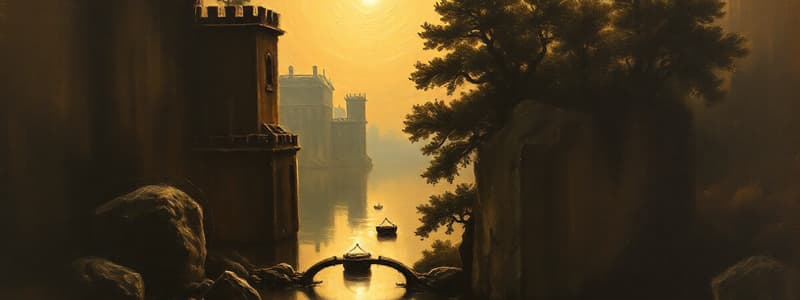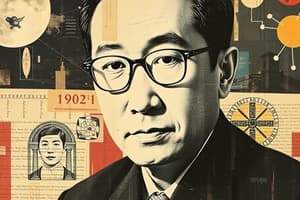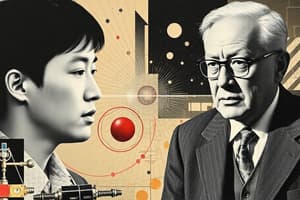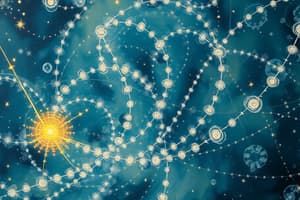Podcast
Questions and Answers
What specific area of physics was profoundly impacted by Yang Chen-Ning's research?
What specific area of physics was profoundly impacted by Yang Chen-Ning's research?
- Classical Mechanics
- Astrophysics
- Particle Physics (correct)
- Thermodynamics
In what year did Yang Chen-Ning depart from China to pursue his studies in the United States?
In what year did Yang Chen-Ning depart from China to pursue his studies in the United States?
- 1946 (correct)
- 1942
- 1949
- 1954
Where did Yang Chen-Ning conduct his research on subatomic decay?
Where did Yang Chen-Ning conduct his research on subatomic decay?
- Massachusetts Institute of Technology
- Stony Brook University
- Princeton University (correct)
- University of Chicago
With whom did Yang Chen-Ning collaborate on the Yang-Mills theory?
With whom did Yang Chen-Ning collaborate on the Yang-Mills theory?
Which fundamental law of physics did Yang's research challenge?
Which fundamental law of physics did Yang's research challenge?
In which specific type of interaction did Yang propose that the conservation of parity might not hold true?
In which specific type of interaction did Yang propose that the conservation of parity might not hold true?
What prestigious award did Yang Chen-Ning receive in recognition of his groundbreaking work?
What prestigious award did Yang Chen-Ning receive in recognition of his groundbreaking work?
Flashcards
Yang Chen-Ning
Yang Chen-Ning
A Chinese-born theoretical physicist known for his research in particle physics.
Nobel Prize in Physics 1957
Nobel Prize in Physics 1957
Awarded to Yang Chen-Ning for proving parity conservation fallibility.
Parity Conservation
Parity Conservation
A principle stating that physical processes should be identical in mirrored scenarios.
Yang-Mills Theory
Yang-Mills Theory
Signup and view all the flashcards
Subatomic Decay
Subatomic Decay
Signup and view all the flashcards
Weak Interactions
Weak Interactions
Signup and view all the flashcards
Stony Brook University
Stony Brook University
Signup and view all the flashcards
Study Notes
Yang Chen-Ning's Accomplishments
- Chinese-born theoretical physicist, revolutionized particle physics
- Received Nobel Prize in Physics for research into subatomic decay
- Completed PhD in nuclear physics at the University of Chicago, then moved to Princeton to continue studies
- Questioned the law of conservation of parity, proposing it was not universal for all interactions
- Collaborated with Tsung-Dao Lee to propose an experiment that would prove their hypothesis
- Experiment led by Chien-Shiung Wu proved their hypothesis regarding weak interactions and radioactive decay
- Awarded Nobel Prize in Physics in 1957, alongside Tsung-Dao Lee for their work
Key Dates
- 1922: Born
- 1946: Received US scholarship to study physics in Chicago
- 1949: Moved to Princeton for subatomic decay research
- 1954: Proposed the Yang-Mills theory of elementary particles
- 1956: Published paper on faulty conservation of parity
- 1957: Awarded Nobel Prize in Physics
- 1965: Became theoretical physics research center director at Stony Brook University
- 1975: Made statement about physics concepts
Studying That Suits You
Use AI to generate personalized quizzes and flashcards to suit your learning preferences.





